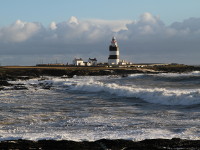
County Wexford
County Wexford is considered the most sunny part of Ireland. Becouse of the Gulf Stream, this is the driest region, with the largest number of sunny days . Almost along the entire coast are located wonderful beaches, and four of them have been awarded the Blue Flag : Courtown, Morriscastle, Rosslare and Curracloe (Curracloe beach was used for the filming of D-Day sequence in “Saving Private Ryan”). Sandy shores, shallow, muddy lagoons create excellent environment for many bird species, what makes County Wexford paradise for bird watchers (best locations are : Wexford Wildfowl Reserve at the North Slobs, Lady's Island and Saltee Island). To get on Saltee Island you can use a boat, which runs several times a day from the picturesque fishing village of Kylmore Quay. Hook Peninsula, which forms the western border of County Wexford is another place worth a visit; impressive ruins of Tintern Abbey and Dunbrody Abbey, fishing village of Duncannon, with a wide, sandy beach, above which rises the Duncannon Fort (built in 1586 out of fear of possible attacks by the Spanish army) . At the southern end of peninsula stands Hook Lighthouse, the oldest lighthouse in Europe, which is open to the public. One of the most important seaports of Ireland - Rosslare Harbour, is located in County Wexford. Rosslare Europort provides ferry services to France and Wales.
Interesting places in county Wexford
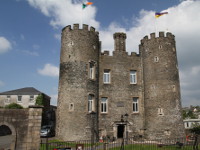
Enniscorthy Castle
Southeast Ireland | County Wexford
Enniscorthy Castle in its present shape dates back to late 16th century but the first Anglo-Norman fortress on this site was built by knight Raymond le Gros in 12th century. That earlier structure was recorded as being destroyed by native Irish in 1326. The castle is similar to Ferns Castle, also has four corner towers but it's much smaller. It changed the o... more info and photos
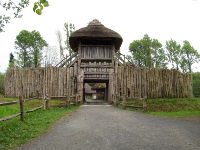
Irish National Heritage Park
Southeast Ireland | County Wexford
The Irish National Heritage Park is an open air museum located on the picturesque banks of the River Slaney on the outskirts of Wexford (just off N11). The park, situated on 35 acres of natural woodlands and wetlands takes you on the journey through the Ireland's ancient past, which starts 9000 years ago when first people (hunters-gatherers) appeard in Irela... more info and photos

The Kennedy Homestead
Southeast Ireland | County Wexford
The Kennedy Homestead is a birthplace of Patrick Kennedy, the grandfather of the president of USA, John Fitzgerald Kennedy. Farmstead is located in Dunganstown, 8 km south from New Ross, County Wexford and now is a home of small museum dedicated to Kennedy family. The story starts during Great Famine in 1848, when Patrick Kennedy left Ireland on Dunbrody Fam... more info and photos
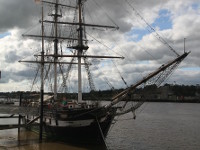
Dunbrody Famine Ship
Southeast Ireland | County Wexford
Dunbrody Famine Ship is replica of 19th century cargo vessel located in the center of New Ross in County Wexford. This kind of ships, (also known as "Coffin Ships") were used to transport people to North America and Australia during Great Famine times. The original Dunbrody was built in 1845, in Quebec (Canada), by an Irish emigrant shipbuilder, Thomas Ha... more info and photos
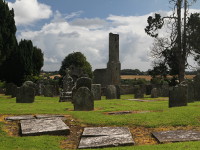
Ferns Abbey
Southeast Ireland | County Wexford
St. Mary's Abbey is a ruin of Augustinian monastery located in historic village of Ferns, founded by King Dermot MacMurrough in 1158, who died in 1171 and was buried in abbey grounds. The monastery was built on the site of an Early Christian settlement founded by St Aidan in AD 598, which was repeatedly plundered by the Vikings between years 834 and 937, ... more info and photos
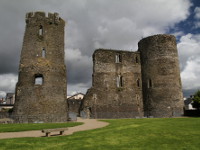
Ferns Castle
Southeast Ireland | County Wexford
Ferns Castle is an Anglo-Norman fortress situated in a historic town of Ferns in north County Wexford (road N11 linking Dublin to Wexford). Built on the site of an earlier stronghold by William Marshal in 1224, the castle changed the owners many times, passing between the hands of Normans and Irish. In 1641, the keep was surrendered to Cromwell's army and... more info and photos
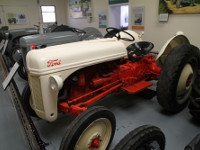
Irish Agricultural Museum
Southeast Ireland | County Wexford
Irish Agricultural Museum is situated in old farm buildings of Johnstown Castle, in County Wexford. Its one of the most comprehensive exhibitions of rural life and farming in Ireland. The wide range of artefacts includes impressive collection of rural transport and farm machinery as also tools related with gardening and landscaping. You can see complete w... more info and photos
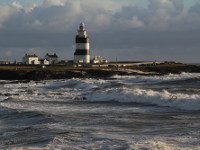
Hook Peninsula
Southeast Ireland | County Wexford
Hook Peninsula is located on the southeastern tip of County Wexford and is considered one of the sunniest and dry places in Ireland. Except good weather and picturesque landscapes you will find there some important historic sites, beautiful beaches and excellent local cuisine. It's also great place for water sports enthusiasts, sea anglers, bird and whale wa... more info and photos
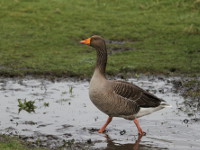
Wexford Wildfowl Reserve
Southeast Ireland | County Wexford
Wexford Wildfowl Reserve is located just outside Wexford town, off the road R741 leading to Castlebridge (approx. 2 km before Castlebridge, there is road sign showing the direction). The reserve is situated on the mud flats of the estuary of the River Slaney and is also called the North Slob. Wexford Wildfowl Reserve is managed by BirdWatch Ireland and the N... more info and photos
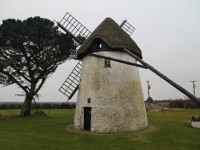
Tacumshane Windmill
Southeast Ireland | County Wexford
Tacumshane Windmill is located in small village of Tacumshane, 15 km south of Wexford town in County Wexford. The windmill was built in 1846 by Nicolas Moran who gained the necessary knowledge in Rotterdam where he was an apprentice millwright. It is interesting that it has a thatched rotary roof facilitating to catch the wind for its sails. The windmill hav... more info and photos
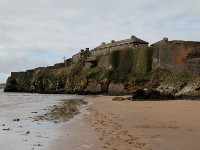
Duncannon Fort
Southeast Ireland | County Wexford
Duncannon Fort is located in Duncannon Village on Hook Peninsula in southwest part of County Wexford. Was established in 1588 to protect coast from the Spanish Armada and to stop the pirates attacking trade ships floating to Waterford Harbour. The Fort is surrounded by a 9m (30 ft) high dry moat and all the major buildings are located around a parade grou... more info and photos
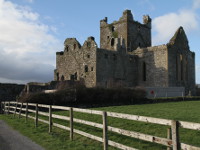
Dunbrody Abbey
Southeast Ireland | County Wexford
Dunbrody Abbey is a Cistercian monastery ruin located on Hook Peninsula in county Wexford. Was founded by Hervey de Montmarisco (uncle of Strongbow - one of the first Normans who arrived to settle Ireland) in the 1170s. Modest appearance and impressive size of monastic complex (it has one of the largest naves of all Irish churches) makes it uniqe. Durin... more info and photos
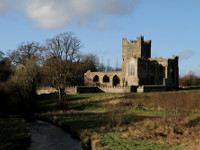
Tintern Abbey
Southeast Ireland | County Wexford
Tintern Abbey, Hook Head Peninsula, county Wexford - the ruins of the Cistercian abbey, founded about the year 1200 by the Anglo-Norman William Marshal, Earl of Pembroke and Lord of Leinster. During his first journey to Ireland his boat was caught in storm near Bannow Bay. He vowed to fund the abbey in this area, if he survives. The name "Tintern" was given ... more info and photos

Saltee Islands
Southeast Ireland | County Wexford
Saltee Islands, are a pair of small islands (Big Saltee and Small Saltee) located about 5 miles from the mainland, near the village of Kilmore Quey in County Wexford. It is one of the most important bird sanctuary in Ireland. You will find there many different species of birds such as Gannets, Puffins, Manx Shearwaters, Fulmars, Kittiwakes, Razorbills, Guill... more info and photos
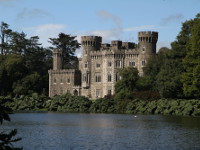
Johnstown Castle
Southeast Ireland | County Wexford
Johnstown Castle is located 6 km south west of Wexford Town and is well signposted on the road N25 (Wexford - Rosslare). This 19th century Victorian castle and its beautifully maintained ornamental gardens were designed by Daniel Robertson, the architect who is famed for his work in Powerscourt House and Gardens and Killruddery Gardens in County Wicklow. ... more info and photos
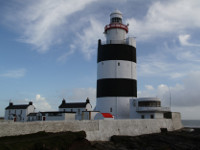
Hook Lighthouse
Southeast Ireland | County Wexford
Lighthouse, located at the tip of the Hook Peninsula in County Wexford is one of the oldest working lighthouses in the world. It was built in the early 13th century by William Marshal, son in law of Richard de Clare (known as Strongbow), as part of the development of his lordship of Leinster. However, it wasn't the first navigation light on the Hook Head. In... more info and photos



















